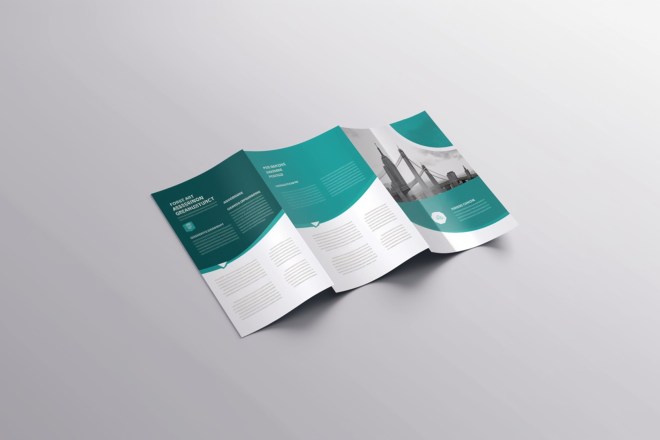As a graphic designer, it’s easy to think your work speaks for itself. Instead of writing a graphic design resume, all you need is a link to your portfolio in your job application. Then, you can hit submit.
Unfortunately, that’s not how it works. Many other talented candidates are applying for the same job as you. Therefore, the competition is high, and you need to learn how to write a graphic designer resume that helps you stand out.
Luckily, you have all the tips and tricks to writing a good graphic design resume in this article below.
1. Start With a Good Format
Your resume is the place to show off all your graphic design skills to potential employers. However, your job isn’t to create a flashy design on your resume. It’s more about creating great content without making it difficult for the employer to read.
You only have a few seconds to impress whoever is reading your resume. Therefore, you’ll need to test your graphic design skills using legible fonts and enough white space.
Remember, creativity is ok. But employers use Applicant Tracking systems that look for facts and figures.
The best way for employers to notice your graphic design resume is by making your case with its content without the use of striking imagery.
2. Include Contact Information
Make yourself reachable by including your contact information. Yet, be careful not to list too many methods for contacting you.
Instead, you could include:
- Your name
- Phone number
- Professional email address
- A link to your portfolio
To make your resume look professional, you should have contact information that will look like this — Dan Lincoln, Graphic Designer – danlincoln@gmail.com – 581-099-2168 – www.dlincoln.com.
It’s best to refrain from using multiple numbers, email addresses and your address since this information is unnecessary. Plus, you won’t want to take up too much space on your resume.
Lastly, if you create a two-page resume, ensure you place your contact information on both pages.
3. Write a Summary or Resume Objective
Summaries and objectives are a basic introduction to your talents and experience. Take note that a resume summary should be an overview of your accomplishments and experiences in two to four sentences.
Meanwhile, the objective should be the same length. However, it needs to be a written summary of your goals.
One thing to remember about your summary or objective is that you don’t want to make it about yourself. Instead, it helps grab the employer’s attention by telling them what you can do for their company.
Consider including your most relevant skills, awards you’ve won, project accomplishments and your current position and responsibilities. If you’re writing an objective, highlight your strengths and what you seek to achieve for the company.
The best way to stand out is by researching the company and learning about the goals they want to achieve.
4. Showcase Your Graphic Design Experience
The experience you have will matter to the person looking over your resume. Therefore, presenting it in the right way is crucial.
The best way to start this section is by listing your most recent job. Then, you can list your role and include responsibilities and achievements in a bulleted list format.
Consider going back to the job you’re applying for and looking over the description. The job offer will have keywords based on what they look for in a candidate. Then, you can list accomplishments and responsibilities for your resume.
Once you’ve created a list, consider choosing the top four achievements and responsibilities most relevant to the open position.
When you tailor your resume to the job listing, you’re more likely to get a call back for an interview. That’s because applicant tracking systems sift through hundreds of resumes and rank them by keywords the company sets for the open position.
If you don’t have any work experience, it would be best if you started offering freelance graphic design work for lower-paying clients. Doing so will help you jumpstart your career when applying for new job listings.
5. List Your Graphic Design Education
While real-world experience matters the most to employers, a degree puts a feather in your cap. Some might think education isn’t as important. However, listing your schooling experience proves dedication to your graphic design career.
Therefore, it’s best to list your education by including:
- The university and years you attended.
- Your degree and major.
- Your GPA, awards and volunteer activities relevant to the job posting.
Even if you haven’t finished school, you can still create a good education section. Start by listing the school you attended with your areas of interest and accomplishments.
6. List Your Graphic Design Skills
While making your resume, you’ll want to ensure the employer notices yours by listing graphic design skills that best match the job description. That way, the automated screening process sends your resume directly to their inbox.
Consider looking at the open position again and searching for the skills they value most. For example, they might look for someone skilled in communication, Outlook and Illustrator.
If you have those skills they’re looking for, ensure you showcase them in a list format. For instance, you could include:
- Outstanding at communicating with large teams of people.
- Skilled in Illustrator.
- Uses Microsoft Outlook daily.
Knowing what skills the employer is looking for and tailoring your resume to make it look like you fit the job description should be your primary goal.
7. Add Your Awards and Certifications
Many of the job applicants may have the same skills and experience that you possess. So how can you ensure your resume truly shines?
The best way to achieve this is by adding a section with top features — awards, certifications and accolades. Highlighting these abilities shows that you may be the best fit for this job.
For example, you can list:
- Conferences
- Associations
- Hobbies
- Certified skills
- Awards you’ve won in the past.
- Publications
- Other pertinent details.
Even if these accomplishments seem small, they can still help you stand out to recruiters. Therefore, it helps to take a minute to brainstorm and ensure you use keywords that can help match you to the job description.
8. Write a Cover Letter
These days, career experts will tell you that cover letters aren’t as relevant to the job market as they were back then. Most recruiters may not have time to read over your cover letter.
However, some job postings still require it if the hiring manager wants to look over it. Plus, graphic design cover letters give you a chance to make your case and why you make the best fit for the job.
Ensure you create a good cover letter by:
- Using the recruiter or hiring manager’s name.
- Including what you love about the company you wish to work for.
- Explaining how you fit into the role and what you can do to help.
It will also help if you highlight your achievements and experience as a graphic designer. Many candidates might not write a cover letter today, giving you a chance to make yourself stand out to recruiters and hiring managers.
Final Tips for How to Write a Graphic Designer Resume
Here are some final tips on how to write a graphic designer resume that can help you get an interview:
- Be consistent. Consistency in format and language is key to making your resume look professional.
- Be concise by providing clear information and ensuring your resume is brief.
- Find relevant resume examples to understand how companies use applicant tracking systems and what facts are most important to include.
- Use relevant keywords that match the job description, even when highlighting your soft skills.
Make an Interview-Winning Graphic Designer Resume
Applying for jobs in hopes of getting an interview can be quite a process. Yet, knowing how to write a graphic designer resume gives you a good foundation at the beginning of your journey.
Ensure you implement these tips when writing your resume and continue to tweak it as you go. There’s no one-size-fits-all resume for every job posting. Yet, tailoring each detail can give you the chance to receive a call-back for an interview.


